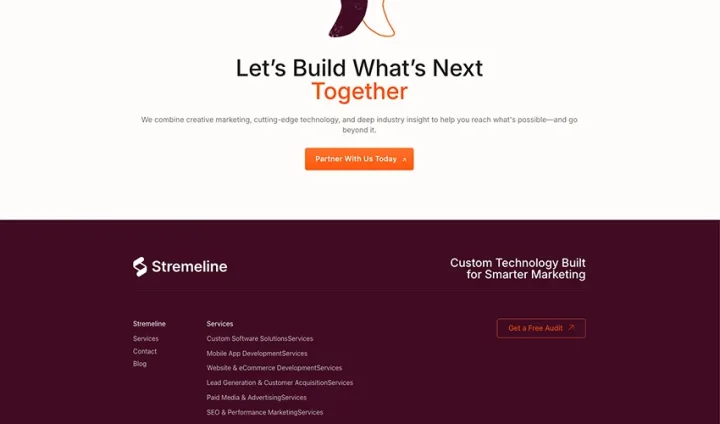Introduction
In the fast-paced business world of 2025, doing things by hand is a hidden drain on resources that wastes time and escalates prices. Many small to medium-sized organizations have seen their operational costs rise by around 15% per year. Repetitive tasks like inputting data, waiting for approvals, and making mistakes undermine revenues and upset teams.

In 2025, workflow automation will transform efficiency and profitability, offering a comprehensive guide on utilizing smart tools to save money, gain free time, and grow your business effortlessly. This guide will explore examples in support, finance, and operations, recommend tools like AppSheet, discuss AI advancements, and provide strategies to measure ROI while avoiding common pitfalls. With data-driven insights, it aims to help founders, operations managers, and HR leaders implement effective workflow automation, emphasizing that automation is essential for standing out in today’s competitive landscape.
Why Workflow Automation Matters in 2025
Companies that want to do well in 2025 need to automate their processes because the economy is becoming worse, and there aren’t enough competent workers. It makes duties easier and also helps you be more adaptable, scalable, and strong in a market that is hard to predict. Reports from the sector show that automation makes things far more productive, and early adopters believe it has altered their businesses. We’ve helped clients at Stremeline change messy workflows into well-organized systems. This has led to more chances to come up with new ideas and benefit customers.
How Workflow Automation Reduces Costs in 2025
The first thing how workflow automation reduces costs in 2025 is to fix problems directly. Data input and approval chains are two examples of manual procedures that can take up 20–30% of an employee’s time. This means that thousands of hours of productivity are wasted each year. Automation changes this by transferring resources to more important jobs.
Hyperautomation, which uses both AI and robotic process automation (RPA), is leading the way. Businesses that employ it can save their operational costs by as much as 30%. It’s apparent that workflow automation reduces costs in 2025 in industries like insurance: The total costs went down a lot because onboarding and claims processing were made easier. Small businesses sometimes have to pay a lot of money in overhead expenditures, but they might save an average of $46,000 a year by automating tasks that are done over and over again. This allows workers to focus on things that make money, like sales or helping customers.
To save the most money, check your processes for any issues that are making them take longer, such as late invoicing or too much reporting. Make sure the tools you employ are compatible with the systems you already have so that they are easy to utilize. This technique not only saves money, but it also sets the stage for growth without rising costs by the same amount. If you don’t implement process automation by 2025, you can fall behind competitors that do.
Time Savings from AI Workflow Automation – Real Examples
Time savings from AI workflow automation save a lot of time by turning hours of boring work into minutes of supervision. AI can predict needs, make modifications in real time, and learn from data, which makes jobs take a lot less time.

AI speeds up construction projects by automatically assigning resources and predicting timetables. We helped a medium-sized contractor make fewer scheduling mistakes, which saved them weeks on each project. Most marketing companies nowadays use AI to speed up the process of having materials authorized, which means campaigns may start sooner. One client set up automated email follow-ups, which freed up more time for salespeople to talk to clients each week. AI helps online retailers maintain track of their inventory, which means they just have to check it once a week instead of every day, giving staff back hours.
Time savings from AI workflow automation save time for everyone on the team, so they can focus on strategy instead of administration. Experts claim that AI will make the same decisions over and over again by 2025. This will make businesses more adaptable and open to new ideas. Choose one procedure that has a large impact and get results straight away. After that, move on to other areas.
Practical Applications Across Functions
It’s not just a theory that workflow automation examples work; it’s a practical solution that helps all departments produce outcomes that can be measured. Here are some real-life workflow automation examples of how we’ve implemented process automation in support, finance, and operations for clients of various kinds, from small businesses to big names.
- Support: AI-powered ticket routing sends client questions to the proper experts, which makes it easier to receive an answer. Chatbots can answer simple questions and forward more difficult ones to a person. A tech support customer sped up the process of repairing problems by automating the first phase of triage. Link: How to Use AI to Help Customers.
- Finance: Optical character recognition (OCR) speeds up the processing of invoices by quickly matching payments to purchase orders and letting you know if there are any problems. This shortens the time it takes to receive approval from days to hours, which means fewer late fees. One of the finance teams we dealt with was able to cut down on processing fees a lot by employing this method.
- Operations: Task management bots provide workers with jobs based on their abilities and availability, and automated audits make sure that rules are followed. This makes sure that logistics work properly and that more work gets done. These tools helped a client in the delivery company improve their delivery schedules.
These workflow automation examples in finance, operations, and support show how flexible they are. Begin with a tiny amount and gradually grow it. For additional information, read our Case Study on How to Make Operations Run More Smoothly.
Choosing the Right Tools
Workflow Automation ROI Calculator: Inputs & Assumptions
When picking the best workflow automation solutions, you need to find a balance between usability, scalability, and integration. In 2025, people who don’t know much about technology will be able to swiftly build complicated automations using no-code platforms.

Best Workflow Automation Software for Small Businesses
Small businesses need tools that work well together and don’t cost a lot of money. Zapier is great because it works with a lot of apps and is easy to set up; however, the different tiers of membership can be too pricey. Make.com provides a free tier and is effective at correcting things, but it could be hard to understand how to use it for complicated tasks. You can do more with each one. Choose options that come with analytics so you can see how much money you’re making right now. These technologies help small teams grow by making it easier for them to find new clients and follow up with leads without making things too hard.
No-code Workflow Automation with AppSheet: What to Expect
In 2025, Google’s AppSheet will be the best no-code way to automate processes. It lets firms make apps from spreadsheets in only a few hours. Pros: You can drag and drop objects, it works well with Google Workspace, it works offline for field workers, and you can quickly develop prototypes. You can’t change the UI as much as you can with other tools like Bubble, and it takes some time to understand how to model data.
Businesses that have to follow standards will find AppSheet’s security, which is supported by Google Cloud, useful. It was made for mobile devices first, so it’s easy to use from any location. Small enterprises can start for free and then move to programs that are simple to pay for. AppSheet helps us develop dashboards for our clients, which speeds up the reporting process. It’s a safe approach for organizations that aren’t tech-savvy to automate tasks like keeping track of stocks or sending consumers updates. You don’t need to know how to code to make things operate better.
Advanced Use Cases with AI
In 2025, AI goes beyond simple principles for automating activities by giving businesses predictive intelligence that changes as their needs change. These great apps help you get more done and be more creative.

Improve AHT with AI – Call Center Workflow Automation
Call centers have to work harder when their average handle time (AHT) is high, which costs them more money. This is what AI workflow automation does: Smart routing uses sentiment analysis to connect callers with agents, which helps First Call Resolution go up. AI takes care of the end of the chat by filling up notes and marking tickets. We helped a medium-sized center set up AI bots to lower AHT and agent burnout. Customers were happier, and the company saved money on staff. Support teams that get a lot of calls need tools like NICE or Balto AI that connect to CRMs to give them real-time statistics.
AI vs Rule-based Automation for Workflows
Rule-based automation handles predictable tasks like approvals but struggles with complex jobs. AI uses machine learning to detect issues, like unusual bills, before they worsen. Hybrid models, blending AI with compliance rules, are adaptable. Time savings from AI workflow automation streamline supply chains by reducing decisions. Regulated firms must comply, but AI enhances flexibility. This balance ensures workflows are robust and enduring.
Measuring ROI and Avoiding Mistakes
If you want to be successful, you need to know how much automation is worth and how to avoid mistakes. Stremeline helps clients get the most out of their investments and deal with problems that come up during deployment.
A workflow automation ROI calculator makes it easier to see how much money you can make. The inputs are the current process time, the cost of labor, the time it takes to break even, the cost of implementation, and the increases in efficiency. Assumptions take into account increasing levels of production. A team that automates approvals can rapidly see a substantial return on its investment, saving it thousands of dollars every year. Kissflow and other tools come with calculators. You can check to see if they are right by looking at old data.
Common Mistakes When Implementing Workflow Automation
Things go wrong a lot of the time because they aren’t set up right. Some of the most common problems are automating processes that don’t work, not managing change (which makes people resistant), or automating too much without pilots, which makes systems too big to operate. People feel angry when the UX design is bad, and they are less likely to use it if they don’t get enough training. You can avoid these problems by starting with modest pilots, getting stakeholders involved early, and changing things based on what they say. When our clients follow this strict plan, they attract a lot more people to buy their goods.
Workflow Automation Security & Governance Checklist
Governance is vital since security breaches can be very expensive. A workflow automation security & governance checklist makes sure that everything is safe:
- When data is being sent or not being used, use AES-256 to keep it safe.
- Use role-based access control (RBAC).
- For a year, keep audit logs.
- Check for security gaps regularly and make sure you’re following the rules (GDPR/SOX).
- Check out stores that aren’t yours.
Using AI to find flaws and models that don’t trust anyone makes things safer. Check the rules every three months to make sure automation is safe and can grow. This strategy decreases risks and makes people more productive.

Automating workflow automation in 2025 ensures long-term success. Save time and money with time savings from AI workflow automation, using tools like AppSheet for quick ROI. Workflow automation examples in support, finance, and operations show how workflow automation reduces costs in 2025. Track returns, avoid pitfalls like poor governance. Start with one process, use no-code tools, and grow smartly. Stremeline believes that automation frees teams for innovation and better serves customers. Transform your work today.
Ready to Stremeline with workflow automation in 2025? Our team designs smarter processes that scale. Book a consultation.



